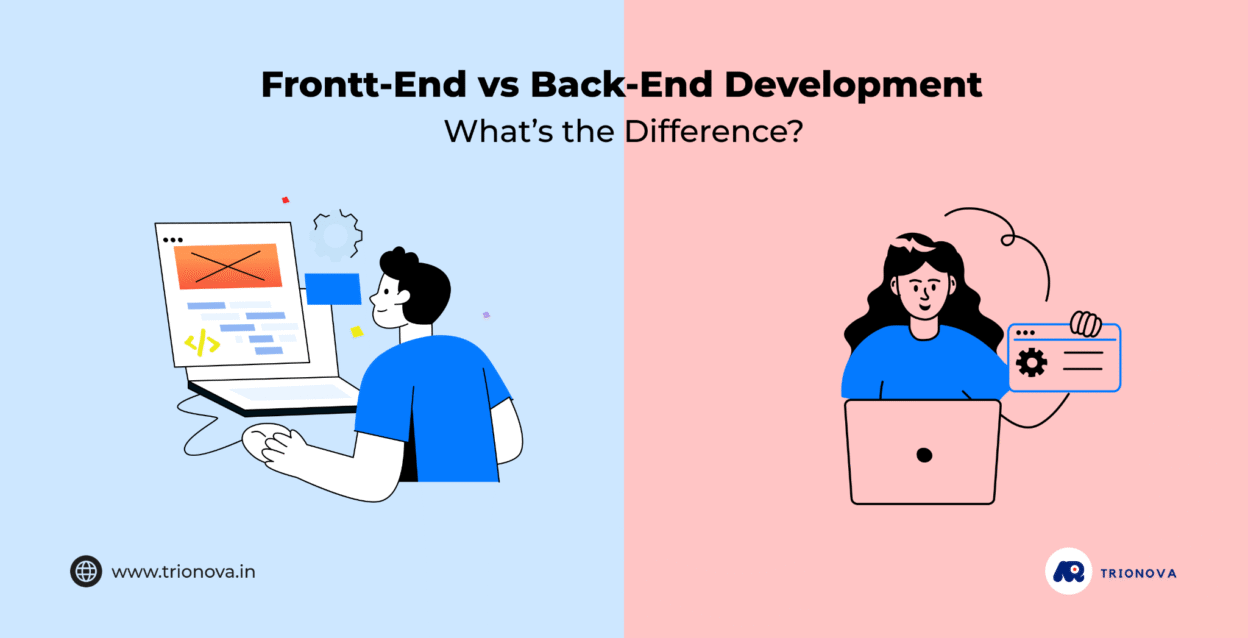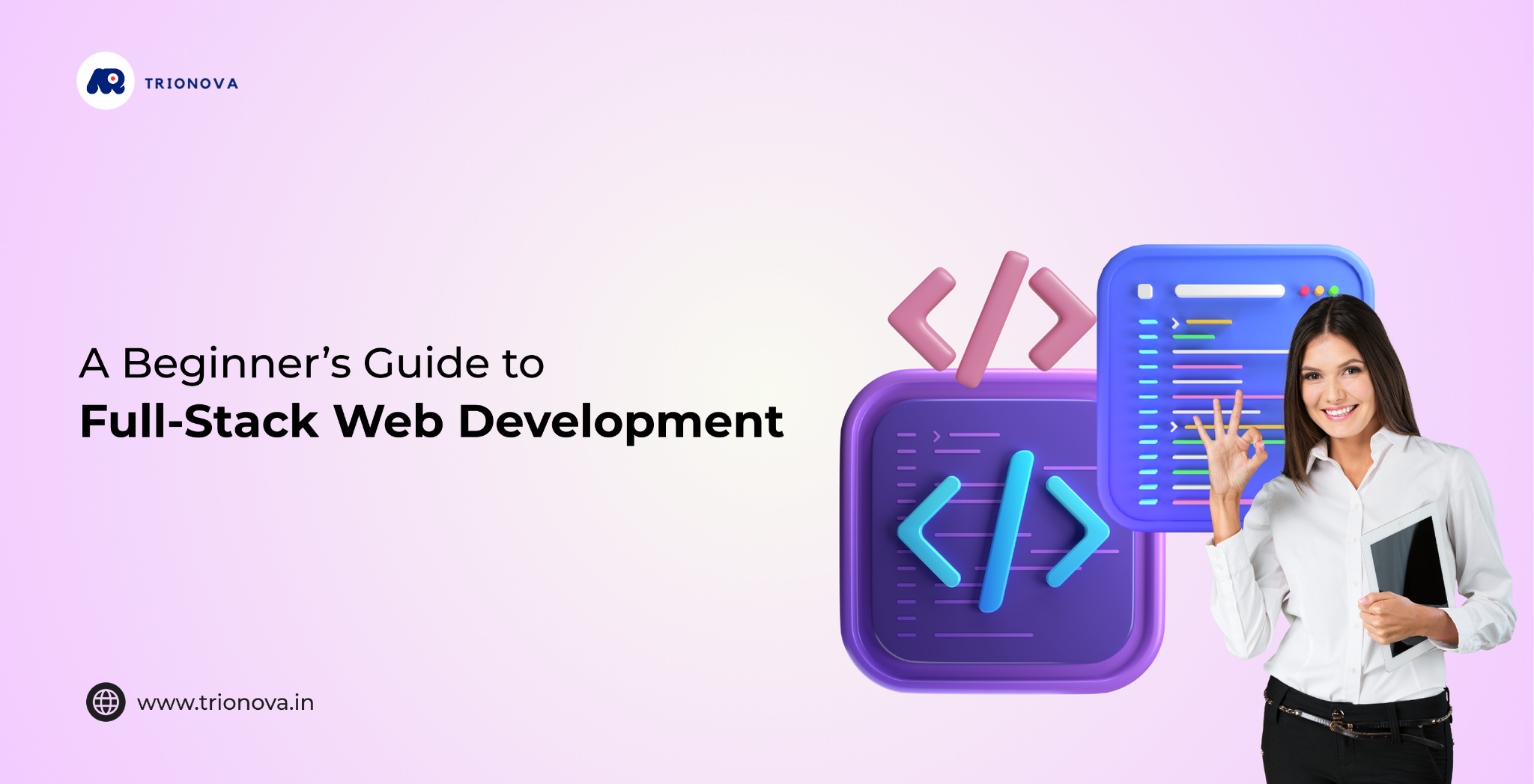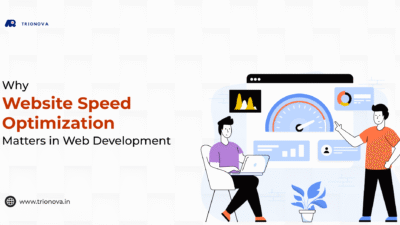When it comes to building a website or a web application, two terms are always at the forefront: front-end development and back-end development. If you’ve ever wondered why your favorite websites look great and perform flawlessly, it’s because of the seamless coordination between these two disciplines. But what exactly do they mean, and how do they differ?
Let’s dive deep into the difference between front-end and back-end development, why both are essential, and how full-stack development ties everything together. Plus, we’ll look at why choosing the right website development company in Chennai can make or break your digital journey.
What is Front-End Development?
Front-end development is all about what users see and interact with. It’s the visual and interactive layer of a website or application. Imagine walking into a beautifully designed store — the colors, the layout, the shelves, and even the lighting. That’s the front-end in action.
Front-end developers use programming languages like:
- HTML (HyperText Markup Language) – The structure of web pages.
- CSS (Cascading Style Sheets) – The style and design (fonts, colors, layouts).
- JavaScript – Adds interactivity like sliders, buttons, and animations.
Core Responsibilities of Front-End Developers
- Building intuitive and user-friendly interfaces.
- Making websites responsive across devices (mobile, tablet, desktop).
- Enhancing site performance and loading speed.
- Ensuring accessibility for all users.
What is Back-End Development?
If the front-end is the storefront, the back-end is the warehouse, inventory system, and staff working behind the scenes. It’s the engine that powers the website, ensuring everything runs smoothly.
Back-end developers focus on databases, servers, and application logic. They use languages like:
- Python
- Java
- PHP
- Ruby
- C#
And frameworks such as Node.js, Django, and Spring Boot.
Core Responsibilities of Back-End Developers
- Managing and securing databases.
- Writing server-side logic for business processes.
- Handling API integrations with third-party tools.
- Ensuring scalability and data consistency.
Front-End vs Back-End Development: The Key Differences
| Aspect | Front-End Development | Back-End Development |
| Focus | User interface & experience | Server, database, & logic |
| Languages | HTML, CSS, JavaScript | Python, PHP, Java, Node.js |
| Tools/Frameworks | React, Angular, Vue.js | Django, Spring, Express.js |
| End User | Directly interacts with users | Works behind the scenes |
| Goal | Make websites attractive & user-friendly | Ensure websites are functional & secure |
Why Both Are Equally Important
Think of a car. The front-end is the sleek design, dashboard, and comfort that passengers enjoy, while the back-end is the engine, transmission, and mechanics that make the ride possible. One without the other doesn’t work.
Websites need both:
- A stunning, responsive design.
- A reliable system that handles data and processes smoothly.
Full-Stack Development Explained
Now that we understand both ends, let’s talk about full-stack development.
A full-stack developer is someone who can work on both the front-end and back-end of a website or application. They are like Swiss Army knives of the web world.
Advantages of Full-Stack Development
- Holistic approach: Developers can see the project end-to-end.
- Cost-effective: Fewer resources needed compared to hiring separate teams.
- Faster development: One person/team manages both sides.
- Flexibility: Ideal for startups and businesses that need rapid prototyping.
Front-End Development in Detail
1. Frameworks and Libraries
Front-end developers often use frameworks like React.js, Angular, and Vue.js. These speed up development and help create dynamic, single-page applications.
2. Responsive Design
With users accessing websites on different devices, responsiveness is non-negotiable. Tools like Bootstrap and Tailwind CSS make this easier.
3. UX and Accessibility
Front-end isn’t just about looks. Accessibility ensures people with disabilities can also use the website seamlessly.
Back-End Development in Detail
1. Database Management
Databases like MySQL, MongoDB, and PostgreSQL store and manage website data.
2. Security
Back-end developers implement security practices like data encryption, authentication, and firewalls.
3. API Integration
Back-end handles external APIs, enabling things like payment gateways, social media logins, and third-party services.
The Role of a Website Development Company
Hiring a professional website development company ensures your project is built with the right balance of front-end and back-end expertise.
A website development company in Chennai, like many rising tech hubs in India, offers:
- Affordable yet world-class development services.
- Access to skilled full-stack developers.
- Scalable solutions for startups and enterprises.
Front-End Development vs Back-End Development: Career Perspective
Front-End Developer Skills
- Strong grasp of JavaScript frameworks.
- Knowledge of design principles.
- Focus on performance optimization.
Back-End Developer Skills
- Expertise in server-side languages.
- Database management.
- Cybersecurity awareness.
Which Career Pays More?
Back-end developers often earn slightly more due to the complexity of managing logic and databases. However, demand for front-end developers is equally strong because user experience is king.
Trends in Web Development
- AI-Powered Websites – AI chatbots and personalization are shaping user experience.
- Progressive Web Apps (PWAs) – Blurring the line between mobile apps and websites.
- Cloud Hosting – Making scalability easier for back-end systems.
- Headless CMS – Decoupling front-end from back-end for more flexibility.
Why Choose a Website Development Company in Chennai?
Chennai has become a hotspot for IT and software services. Partnering with a website development company in Chennai offers:
- Expertise in global projects with competitive costs.
- Agile development practices for faster delivery.
- Access to full-stack developers familiar with modern frameworks.
How Front-End and Back-End Work Together
Picture this: You log into an e-commerce site. The front-end shows you a smooth login page, while the back-end verifies your credentials against the database. Together, they deliver a seamless shopping experience.
Future of Web Development
The future is all about integration:
- Front-end will continue focusing on immersive experiences with AR/VR.
- Back-end will prioritize cloud computing and AI-driven automation.
- Full-stack development will dominate startups for its agility.
Conclusion
In the battle of front-end vs back-end development, there isn’t really a winner — both are essential for creating high-performing websites and applications. While front-end ensures users have an engaging experience, back-end guarantees that everything works seamlessly behind the scenes. Together, they create the perfect digital product.If you’re looking for a reliable partner to bring both worlds together, collaborating with a website development company in Chennai could be the smart move for your business.





